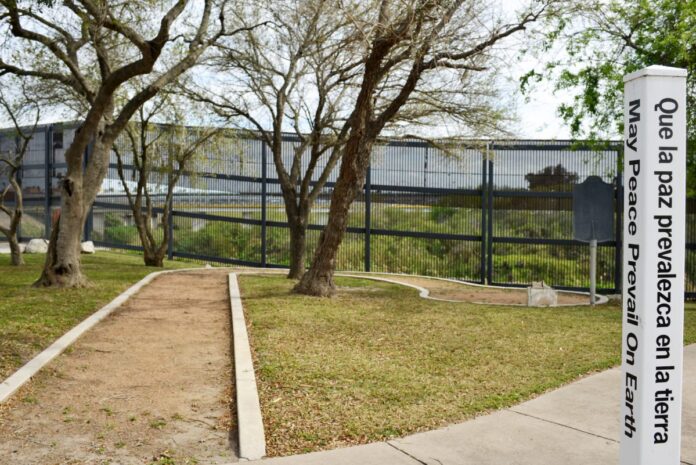BROWNSVILLE — The federal government is continuing its effort to build border fencing on land south of Military Highway in west Brownsville.
United States Attorneys last week filed the fourth land condemnation lawsuit since late May seeking access to a property in the area for purposes of surveying for border fencing.
The litigation targets 34.015 acres owned by Antonio Manuel Diaz, Diana Nori Diaz and Thomas Edward Diaz, who are the heirs of Maria Hilaria Cavazos Diaz.
The property the government wants access to is between the River Bend Resort & Golf Club and a small neighborhood in San Pedro, which is about five miles away from the golf club.
An email to residents who live in the River Bend Resort & Golf Club obtained by The Brownsville Herald last weeks shows that the U.S. Army Corps of Engineers is planning to survey that property as well for purposes of building a border fence.
Condemnation lawsuits in that area are likely, according to the email.
The United States Attorneys Office has also filed land condemnation lawsuits against Jaime R. Treviño and Rocio Treviño and against Salvador J. Castillo and Yvette Arroyo, residents who live in the neighborhood in San Pedro.
In a recent interview, Castillo and Arroyo said their neighbors also received letters from the U.S. Army Corps of Engineers requesting access to their properties to survey for the construction of border fencing.
The first land condemnation lawsuit for purposes of border fencing filed following the litigation from a decade ago when the first border wall was built is against Wanda Hollon and Robert R. Mathers, who own an agricultural property approximately one mile northwest of the Silas Ray Power Station, which is located off of Power Plant Drive on the western edge of Brownsville, also south of Military Highway.
Hollon has been dismissed from that lawsuit and replaced by Edward Mathers Farms.
Recent court records show that Mathers plans to fight the government’s efforts to survey his property for the purposes of building a border fence.
“Defendant objects to Plaintiff’s proposed taking and to the proposed construction of the project as it exceeds the statutory authority because Plaintiff has failed to meaningfully consult with and negotiate with Defendant related to (i) the location of the proposed improvements, (ii) the amount of land sought to be acquired by the Plaintiff, (iii) the value of the property sought to be acquired by Plaintiff, and (iv) the damages caused to those remaining portions of the property after the condemned property is partitioned,” Mathers’ attorney, Frank Wood, said in court documents.
Mathers also complains that the government has not offered just compensation for the tract which it seeks to condemn. The government has offered $100, as it does initially in all of the land condemnation lawsuits it’s filed.
He also brings a counterclaim against the government, complaining that the government has already placed equipment and other property on his land without prior permission or just compensation.
Mathers is seeking a jury trial.




